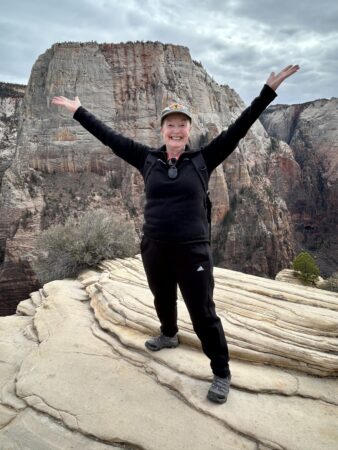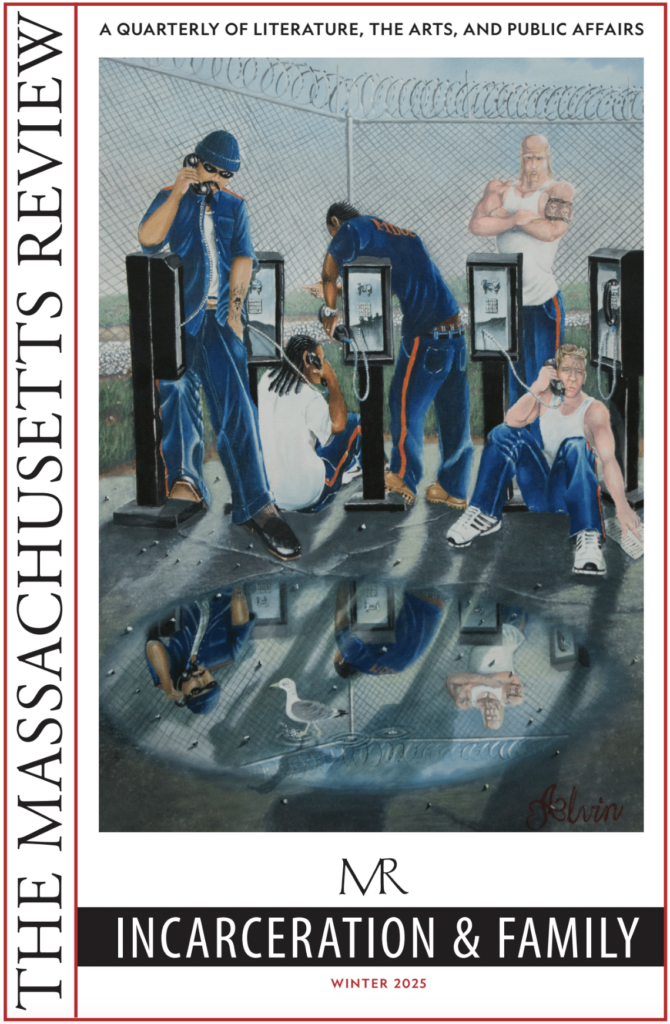10 Questions for Janis Bultman

“I’m in the call room at the Suicide Prevention Center (SPC) when the phone rings. I hate it when the phone rings. I’ve never had a three-hour shift when it didn’t ring, but sometimes there are long stretches of silence. I pray for those long stretches of silence.”
—from Janis Bultman’s “Suicide Prevention,” Volume 66, Issue 2 (Summer 2025)
Tell us about one of the first pieces you wrote.
In elementary school, I wrote and illustrated little hand-made books about my collection of trolls. I gave them to my friends as birthday presents instead of the usual game or toy. I remember looks of puzzlement and one of fleeting outrage. No game? No toy? Then, good manners set in, and thanks were politely expressed. At a recent reunion, one of the recipients told me she still had her troll book after all these years. I was pleased beyond describing.
What writer(s) or works have influenced the way you write now?
At a long-ago workshop, Marilynne Robinson told me one of my stories was cleanly written and situated in a credible and familiar world but suggested complexities it never acknowledged. It needed perspective. I set the story aside but recently rewrote it. As I did, I realized how much I’d internalized her critique. Suggesting complexity and acknowledging it—or better yet, getting the reader to acknowledge it—has been my goal ever since that workshop. Also, perspective.
Another goal is to tell it slant—as Emily Dickinson advises.
What other professions have you worked in?
I’ve worked as an assistant for a book producer. I’ve worked as a freelance journalist and a staff reporter for a business magazine. I’ve taught writing and literature to college students. I’m also the managing partner of a family LLC, co-founder and former director and president of a non-profit for women writers, serial volunteer, and accidental lawyer. For years, I represented myself in divorce court including for an appeal. I saved a lot of money and learned it isn’t necessarily true that the person who represents herself has a fool for a lawyer.
What did you want to be when you were young?
At various times, I’ve wanted to be an archeologist, folk singer, forest ranger, fashion designer, textile designer, and modern dancer, but I’ve always wanted to be a writer, and I can’t remember a time when I didn’t write.
What inspired you to write this piece?
For five years, I volunteered as a Crisis Intervention Counselor at CommUnity Crisis Center in Iowa City and the National Suicide Lifeline. One day near the end of that time, the first sentence of “Suicide Prevention” came to mind. I wrote it down. The next few paragraphs quickly followed. Then I stalled. The rest came eventually and with a little perspective—which is often how it goes.
Is there a city or place, real or imagined, that influences your writing?
My home office is the place that most influences my writing. It has navy blue walls and a view of my neighbor’s impeccable garden. There’s room under my desk for my Australian Shepherd, Clooney, and I can be productive there.
Who typically gets the first read of your work?
I am my own first reader because I’ve learned over time that I am my own best critic.
When I was in high school, I had two creative writing teachers. Mr. Mudd gave me an A on every story I wrote. Mrs. Mowery hardly ever gave me an A. I couldn’t understand it, and neither gave me enough feedback to help me to a conclusion.
When I worked as a staff reporter some years later, my editor rearranged and rewrote every story I submitted top to bottom. He tried to explain how his version was better, but honestly, I just didn’t see it. At the same time, I was freelancing for several magazines where the editors made few changes before sending my work to print. Readers responded to my articles, so I knew I was communicating what I’d intended. That was confusing too.
Over the years, I’ve belonged to a handful of writers’ groups. I enjoyed the fellowship. And I learned they’re most helpful when they expose a story’s obvious flaws as exemplified in this exchange from my story “The Writers’ Group”:
When it was my turn, I complimented what I could, made a few mild suggestions, and pointed out that one character who worked as a florist had dead plants all over her house. “It was very funny. I mean, a professional florist whose home is filled with dead plants?”
“Oops. Gotta change that,” said [the author], scowling.
But too often, criticism led to self-doubt and poor choices, and that wasn’t helpful at all.
Now when I finish a story, I set it aside for a while. When I come back to it, I usually have the perspective I need to recognize what works and what doesn’t.
If you could work in another art form what would it be?
I’d love to be able to weave tapestries on a floor loom in the style of Erin M. Riley. Her tapestries are intimate self-portraits or they’re about sexuality, trauma, addiction, and domestic violence. Sometimes they integrate imagery and prose. She says she wants them to be risky and new—and they are—and she aims to connect with viewers about something they haven’t yet processed. She’s absolutely brilliant.
What are you working on currently?
I just finished a collection of stories called Where Do You Think You’re Going? Who Do You Think You Are? that includes “Suicide Prevention” and nine other stories about how the desire to believe in something—God, love, convention, self—is confounded by the realities of life. And I’m working on a novel about marriage, divorce, and the perils of blind faith called One More Song About Moving Along.
What are you reading right now?
I’m reading Notes to John, Joan Didion’s journal entries about her sessions with her psychiatrist starting in 1999, the goal of which was to better understand her complicated relationship with her daughter, Quintana. I’ve always admired Didion. In college, I wrote my undergraduate honors thesis about the mother/daughter connection in Didion’s first three novels. When I was a young writer, I wanted to meet her and ask her to be my mentor, but I was too shy to approach her. All of this led me to imagine a story about what might happen if a young writer did have the courage to approach an admired older writer about whom she’s written an undergraduate honors thesis about mothers and daughters. I have the first few paragraphs.
JANIS BULTMAN is the author of Legacies: Interviews with Masters of Photography from Darkroom Photography Magazine, a Kirkus Reviews best book of 2018. Her fiction and journalism have been published in The Sun, Pacific Review, Eureka Literary Magazine, San Jose Studies, Forbes, Photo District News, Rolling Stone Press, and more. A graduate of the Iowa Writers’ Workshop, she’s received a New Jersey Arts Council Fellowship for Fiction and a Pushcart Prize nomination. She’s currently working on a novel and story collection. From 2018 until 2022, she volunteered as a Crisis Intervention Volunteer (CIV) for CommUnity Crisis Services in Iowa City and the National Suicide Lifeline.



